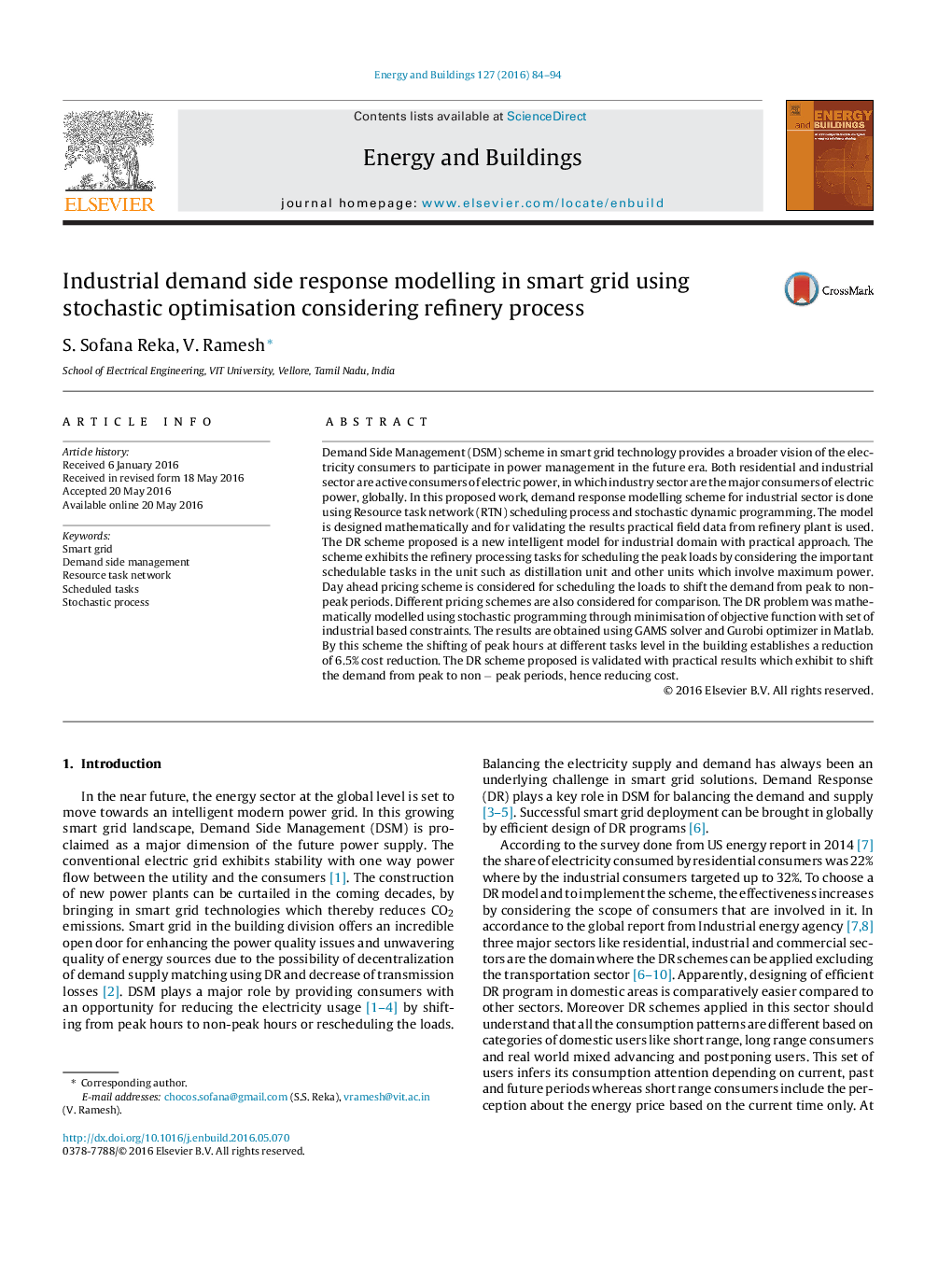| کد مقاله | کد نشریه | سال انتشار | مقاله انگلیسی | نسخه تمام متن |
|---|---|---|---|---|
| 261965 | 504007 | 2016 | 11 صفحه PDF | دانلود رایگان |
• The major target of this work to show that.
• DR scheme appropriately shifts the load from peak to non-peak hours by RTN scheduling by creating objective function and constraints using stochastic dynamic programming(SDN).
• The analysis of RTN discrete formulation is evaluated for successively three process units used in refinery process. Realistic data is been used for the performance evaluation of the model.
• Another important aspect of the model is done for price based DR programs with different scheduled tasks using scenario based stochastic approach.
Demand Side Management (DSM) scheme in smart grid technology provides a broader vision of the electricity consumers to participate in power management in the future era. Both residential and industrial sector are active consumers of electric power, in which industry sector are the major consumers of electric power, globally. In this proposed work, demand response modelling scheme for industrial sector is done using Resource task network (RTN) scheduling process and stochastic dynamic programming. The model is designed mathematically and for validating the results practical field data from refinery plant is used. The DR scheme proposed is a new intelligent model for industrial domain with practical approach. The scheme exhibits the refinery processing tasks for scheduling the peak loads by considering the important schedulable tasks in the unit such as distillation unit and other units which involve maximum power. Day ahead pricing scheme is considered for scheduling the loads to shift the demand from peak to non- peak periods. Different pricing schemes are also considered for comparison. The DR problem was mathematically modelled using stochastic programming through minimisation of objective function with set of industrial based constraints. The results are obtained using GAMS solver and Gurobi optimizer in Matlab. By this scheme the shifting of peak hours at different tasks level in the building establishes a reduction of 6.5% cost reduction. The DR scheme proposed is validated with practical results which exhibit to shift the demand from peak to non − peak periods, hence reducing cost.
Journal: Energy and Buildings - Volume 127, 1 September 2016, Pages 84–94
